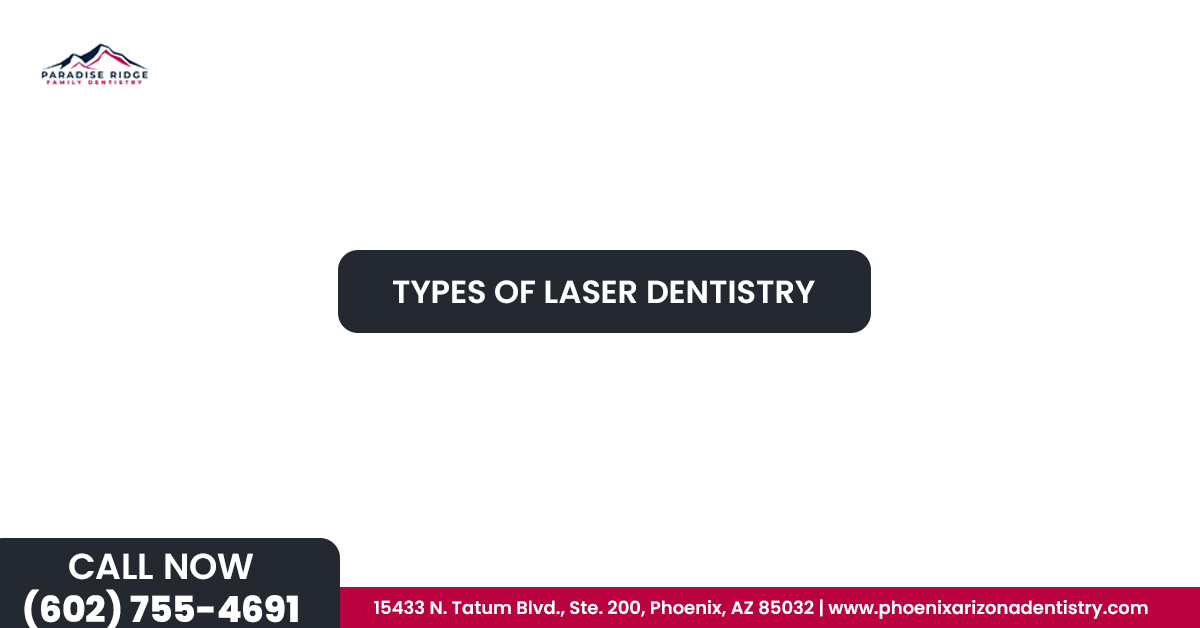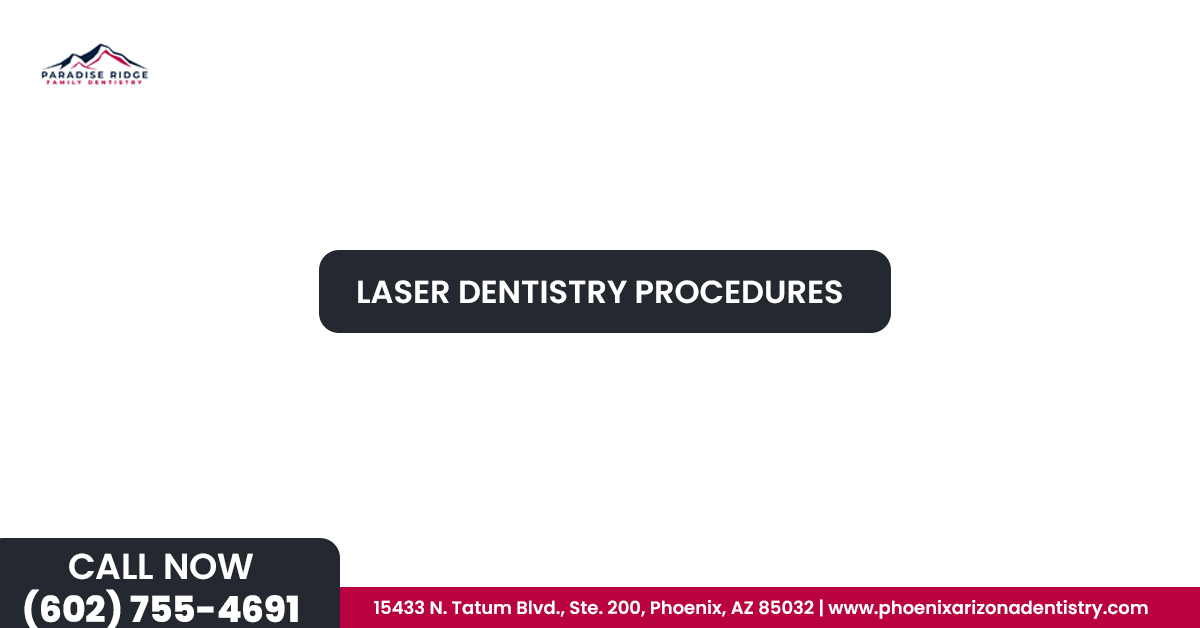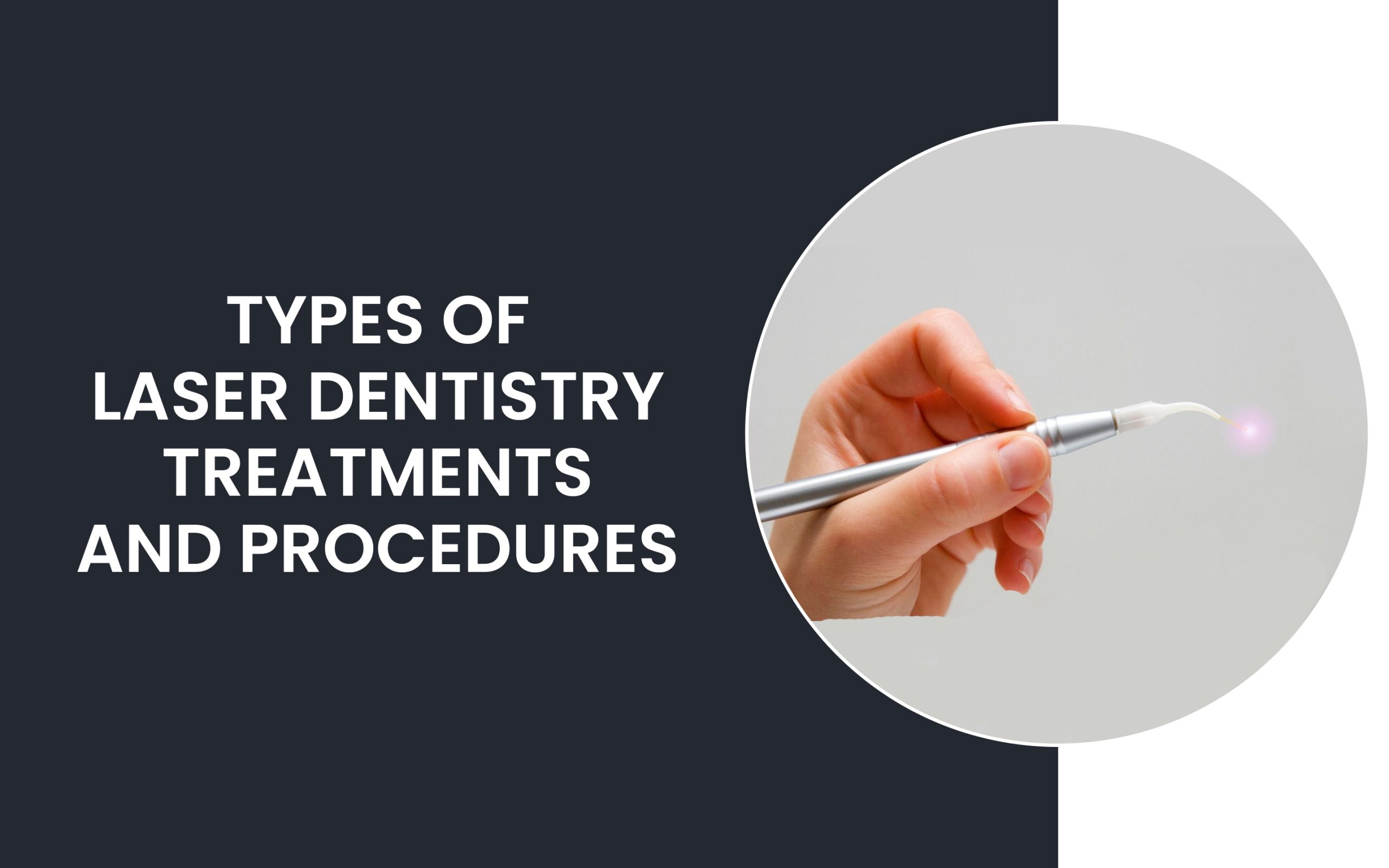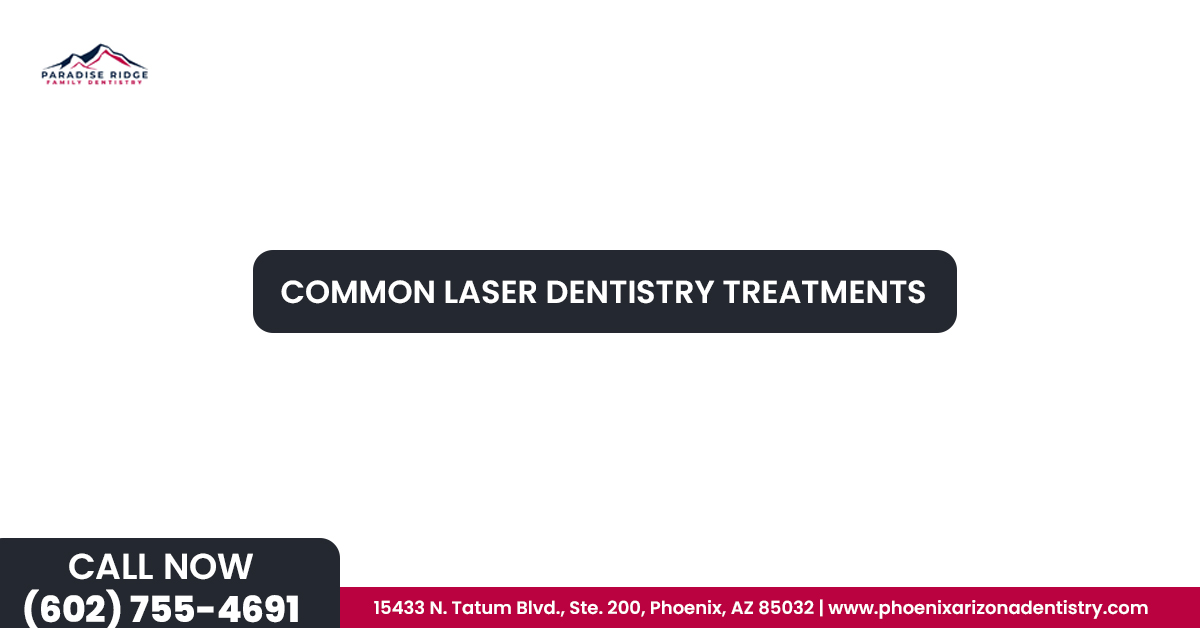Laser dental treatments are continuing to revolutionize the dental industry. Dentists can carry out a number of treatments with greater accuracy and less discomfort by using concentrated laser beams. Traditional dental care has been revolutionized by this innovative method, which provides patients with more accurate and easy solutions for a range of oral issues. Laser dentistry methods are opening the door to a healthier and brighter smile by treating gum disease and carrying out complex surgical operations.
Table of Contents
How Laser Dentistry Works
Laser dentistry procedures offer a variety of lasers based on the treatment. How the laser interacts with tissues depends on its wavelength. Hard tissue lasers, for example, target teeth and bones, whereas softer tissue lasers are made for gums. In comparison to drills and other non-laser instruments, the utilization of lasers in dentistry offers a more relaxing treatment alternative for a variety of dental treatments. The targeted tissue is either cut or vaporized by the laser’s light energy during treatment. This same technique improves faster healing, decreases discomfort, and lowers bleeding. Dental professionals now handle both simple and complicated oral health concerns in a whole new way, thanks to the introduction of laser technology. Because of its advantages and efficacy, this approach is becoming more popular.

Types of Laser Dentistry
The technology uses focused laser radiation to carry out accurate dental operations. It operates by delivering power in the form of light. This radiation travels at multiple wavelengths and is captured by a target region, depending on the desired result. These target locations in dentistry include soft tissue, deterioration, or enamel. For example, in laser dental procedures, the laser can sculpt gums, remove germs during root canal operations, or remove decaying portions within a tooth. This same technique improves faster healing, lessens discomfort, and decreases bleeding. Hard tissue lasers are intended for usage on teeth and bone, whereas soft tissue lasers are mostly used for operations with gums and other soft tissues.
Soft Tissue Lasers
These lasers are perfect for cutting soft tissues and closing blood vessels because their wavelengths can be easily taken in by water and hemoglobin. Examples include:
- Frenectomy: – A laser frenectomy is done to relieve concerns related to a tight frenulum, such as trouble in speaking or eating.
- Removal of Lesions: – Lasers securely remove biopsies and oral lesions, guaranteeing less discomfort and a faster recovery.
- Gum Reshaping: – Uneven gum lines can be reshaped using laser gum therapy, enhancing both appearance and general dental health.
Hard Tissue Lasers
These lasers are useful for processes like cavity identification and tooth preparation because they use wavelengths that can pass through hard tissues like dentin and enamel. Examples include:
- Tooth Sensitivity Treatment: – Lasers decrease sensitivity to heat or cold stimuli by closing tubules on the tooth’s root.
- Cavity Detection and Removal: – Early cavity identification and accurate decay removal without affecting the surrounding tooth are made possible by lasers.
- Bone Reshaping: – Lasers can assist in reshaping bone to improve denture fit or dental implant.
Common Laser Dentistry Treatments
Different laser applications are used by dentists to address various oral health issues. It provides extraordinary flexibility and can be used for anything from gum sculpting to cavity identification. The method is very useful for precisely modifying hard tissue and addressing soft tissue issues.
- Teeth Whitening: – Laser whitening is a quick teeth-whitening procedure that uses laser radiation to activate a gel based on peroxide.
- Cavity Identification and Dental Preparation: – By identifying signs of tooth decay, lasers can spot cavities early. With laser dentistry for teeth, decaying tooth parts can be removed more precisely and with less discomfort.
- Gum Disease Treatment: – To target diseased tissues, sterilize periodontal pockets, and encourage gum tissue regeneration, laser gum treatment professionals apply modern laser dental techniques. Compared to conventional techniques, this approach guarantees faster recovery and is less intrusive.
- Lesion Removal or Biopsy: – Using lasers for oral lesion removal or biopsies is one type of laser dentistry. These less intrusive techniques reduce discomfort and accelerate the healing process.
- Treatment For Cold Sores: – Laser dentistry for teeth offers pain relief and faster recovery for cold sores. Lasers offer long-lasting comfort by stopping breakouts.
- Root Canal Procedures: – While preserving the tooth’s structural integrity, modern laser dentistry for teeth guarantees that root canals are properly cleaned. This method lessens pain and improves treatment results.
- Frenectomy: – A laser frenectomy is an innovative laser dentistry procedure that provides a more accurate and less invasive option for treating tongue-tie disorders than conventional techniques.

Laser Dentistry Procedures
Laser dental treatments are customized to meet individual oral health needs. Below is an overview of key procedures organized by their specific applications:
Soft Tissue Procedures
- Gingivectomy: – Involves reshaping or removing excess gum tissue to enhance aesthetics or manage gum disease.
- Gummy Smile Correction: – Reduces excessive gum visibility when smiling by precisely removing surplus gum tissue.
- Laser Frenectomy: – A quick and effective procedure to release a tight frenulum beneath the tongue or upper lip.
Hard Tissue Procedures
- Root Canal Therapy: – Lasers provide enhanced cleaning and disinfection of root canals compared to traditional techniques.
- Tooth Sensitivity Relief: – Lasers can seal exposed tubules on tooth roots to reduce discomfort from sensitivity.
- Cavity Treatment: – Removes decayed areas of a tooth with greater precision and less discomfort than conventional methods.
Cosmetic Procedures
- Teeth Contouring: – Lasers reshape and contour teeth for aesthetic enhancements.
- Whitening Solutions: – Laser activation boosts the effectiveness of whitening gels, delivering faster and more noticeable results.
Conclusion
The integration of types of laser dentistry marks a significant advancement in dental care. These sophisticated procedures offer numerous advantages, from increased accuracy to better patient comfort. Laser dentistry has reshaped the landscape of dental care, offering advanced solutions for various oral health issues. From dental laser treatment near me for gum disease treatment to teeth whitening, laser dental treatments ensure effective and patient-friendly care. Searching for laser gum treatment, Phoenix can connect patients with experienced professionals offering this modern service, like Paradise Ridge Family Dentistry. Here, advanced laser dentistry procedures are tailored to meet individual needs. The clinic prioritizes precision, comfort, and efficiency in every treatment, ensuring optimal outcomes. Whether addressing gum issues or whitening teeth, the team uses advanced technology and skills to perform the procedure.



